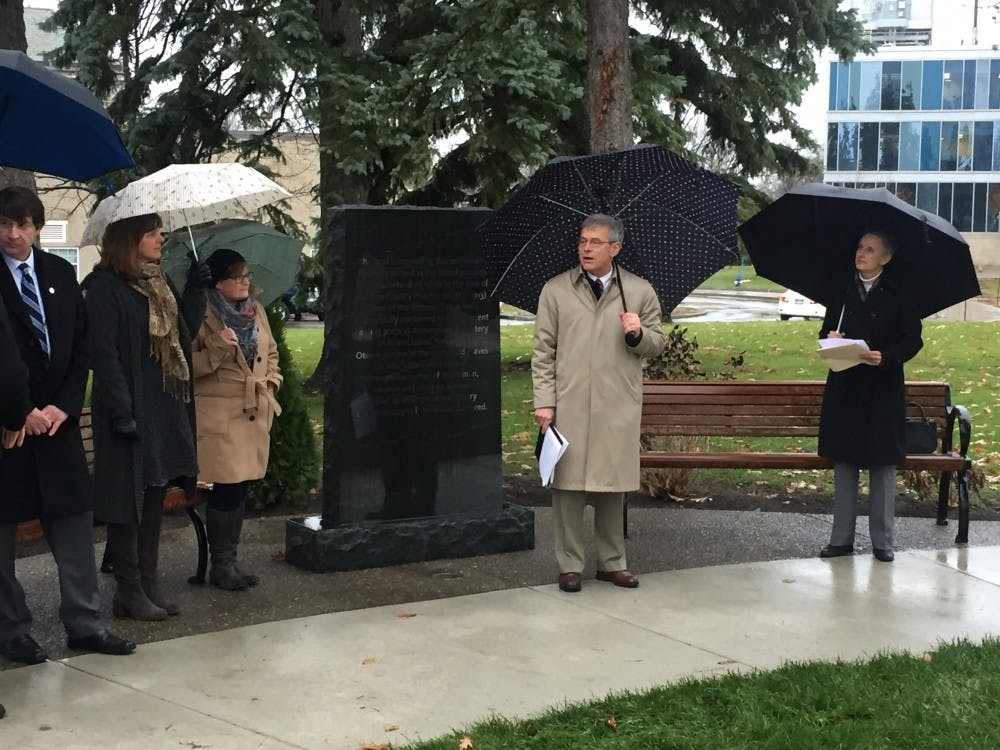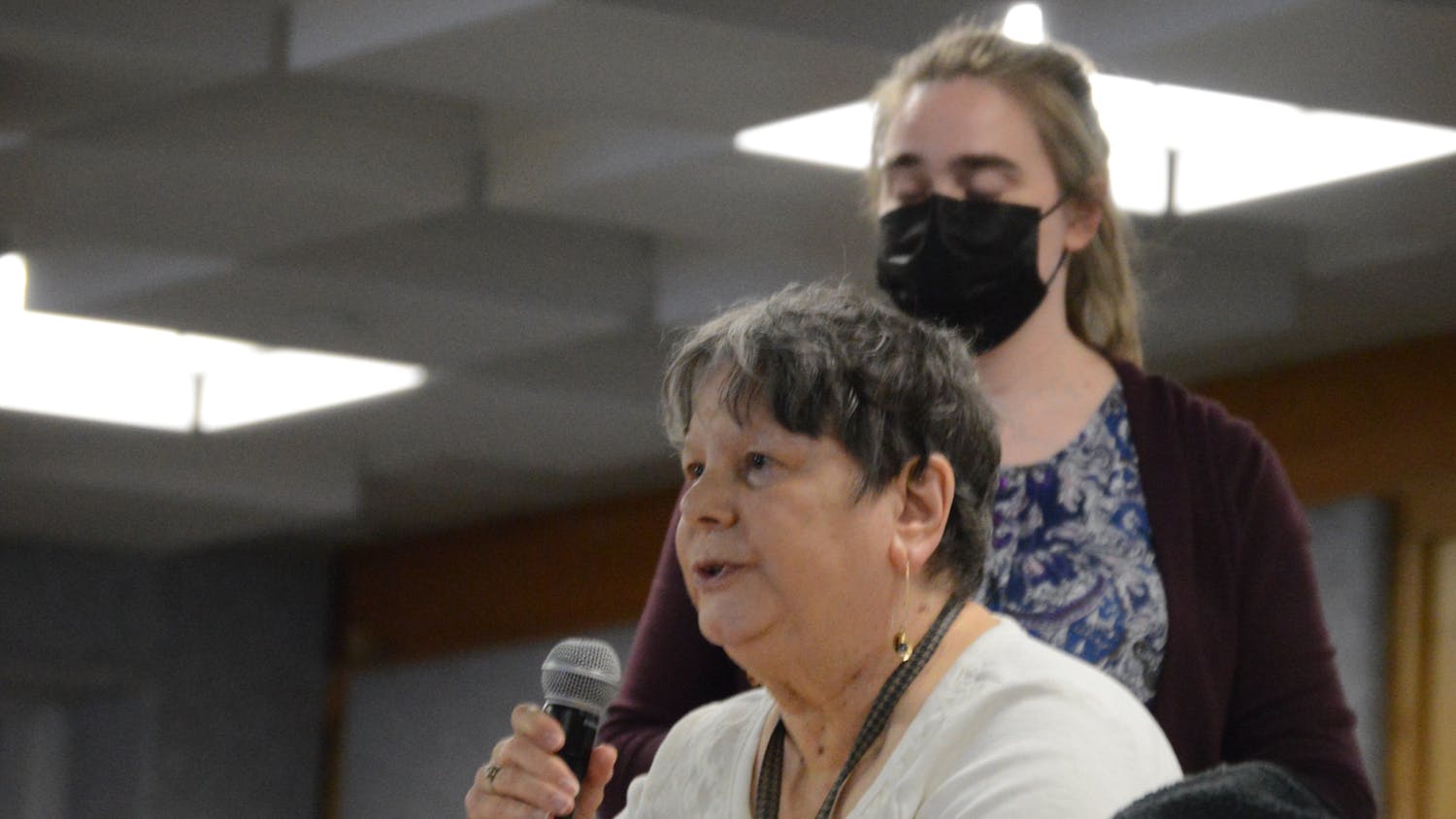UB dedicated a new memorial garden to remember those who were buried in the former Erie County Poorhouse Cemetery on South Campus.
Roughly 20 UB community members braved Monday’s stormy weather to attend a 15-minute ceremony, which honored those who lived on what is now the university’s South Campus. The garden, complete with a 6-foot-tall, black marble monument documenting its history, commemorates the lives of those who died over a century ago at the poorhouse.
Provost Charles Zukoski began the memorial by thanking everyone for showing up despite the rain, and introducing Reverend Monsignor J. Patrick Keleher, director and campus minister for the Newman Center.
Keleher took time to remember the stories and lives of the people who were found on the grounds during construction throughout the years. Laura Hubbard, vice president for finance and administration and Douglas Perrelli, director of the department of anthropology, followed the reverend and discussed the necessary work to study and honor the remains.
The poorhouse existed from 1851-1913, when immigrants from Germany and Ireland resided on the premises. These poorhouse residents were believed to have built the surrounding area into the city it is today.
Zukoski explained the poorhouse served as a “social safety net” for community members who grew ill, became injured and fell upon generally difficult times. As hard times were common in the era, the poorhouse was a home to many residents.
But when residents died, they could only afford to be buried on the cemetery on the property.
The university bought 106 acres of the land from Erie County in 1909 and the remaining 72 acres from the county and private individuals shortly after. Excavations and remodeling began on the land in the early 1920s.
The creation of the memorial garden is part of a decade-long effort by UB’s anthropology department to find and identify the poorhouse residents, many of which were buried without record.
The reinterment process will also be ongoing as construction workers continue to find bodies during renovations.
Last year, 372 bodies were transferred to Assumption Cemetery in Grand Island for proper burials following excavations in 2008 and 2012.
The university initially found the remains during renovations, which prompted the anthropology department to excavate the land. This project provided anthropology students with a hands-on opportunity to study real bodies that were part of their own community.
In a previous interview with The Spectrum, Perrelli said the university’s future construction plans will uncover more bodies on South Campus.
“If UB 2020 moves on as planned, there would be a major archaeological study done prior to subsurface impacts,” Perrelli said. “And we would look to excavate human remains before they were disturbed by a construction project.”
The anthropology department’s research suggests over 3,000 bodies were buried on South Campus, but only 375 were reinterred, according to Perrelli.
Perrelli said the garden will serve as “an area that people can go to and recognize that this is part of the legacy of South Campus land.”
Kelly Hayes McAlonie, director of campus planning, said it is important to educate the community about the poorhouse, as it was an important part of the community’s history.
“It’s a hidden history and it needs to come out of the shadows and be celebrated,” Hayes McAlonie said. “The university has such a strong commitment to our community and really grew from this community [and] this is an example of that.”
She said the garden will provide “a place for repose on site,” right where the Buffalonians lived 100 years ago.
Zukoski said it was important to create the memorial garden because it honors the history of the area and the lives who helped to build it.
“I think it’s commemorating our history, our ties to our community and the people who lived here,” he said. “It’s a somber place, but it’s also a place of memory for us to contemplate our existence and our lives.”
Jacklyn Walters is an assistant news editor and can be reached at news@ubspectrum.com

Jacklyn Walters is a senior communication major and The Spectrum's managing editor. She enjoys bringing up politics at the dinner table and seeing dogs on campus.





